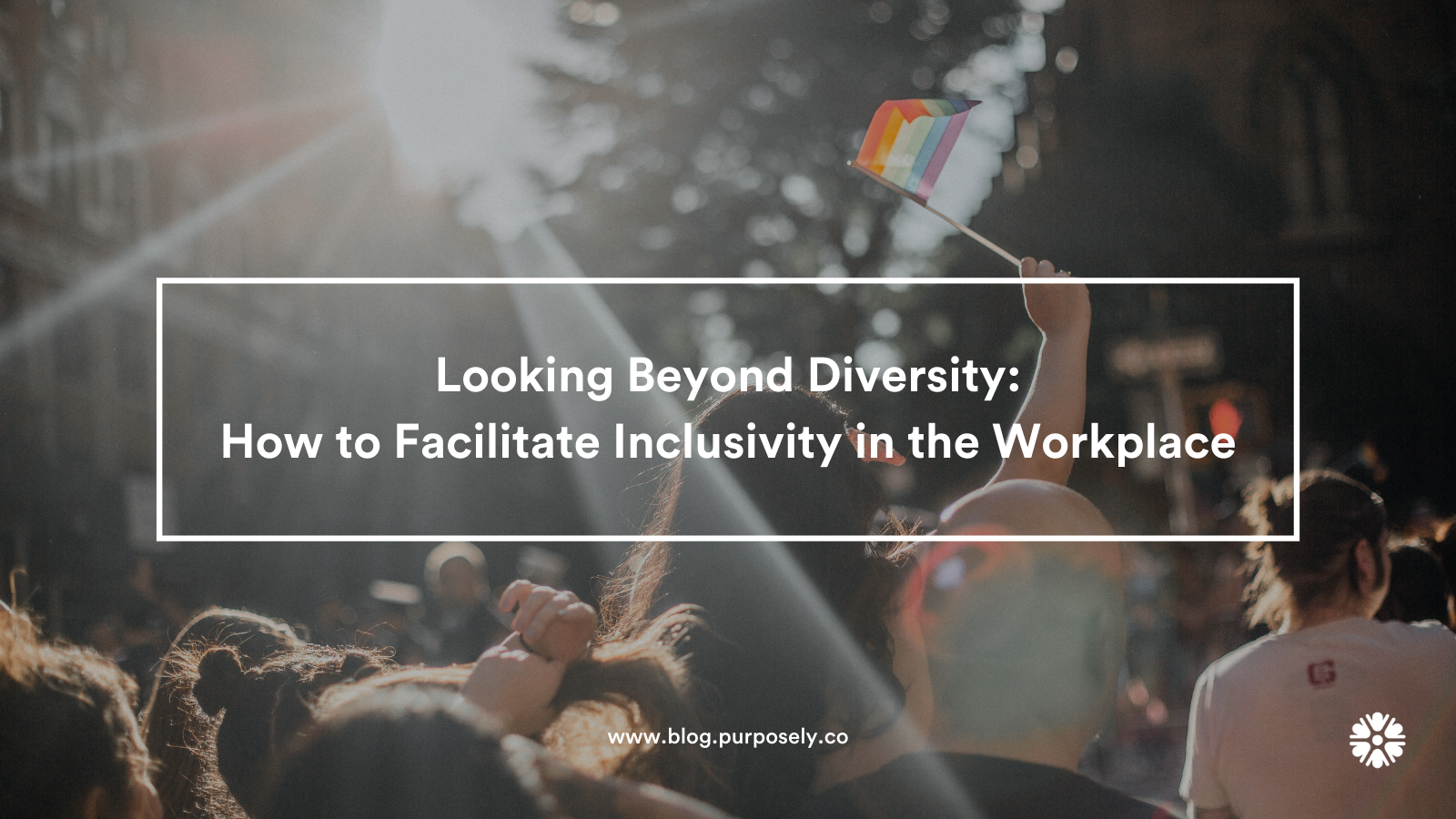It’s the end of Pride Month and the phrase “diversity and inclusion” has been thrown around so often that the two words are seen together more often than not, but what is the difference between the two and what does that mean for your company? Which one is more important?
Neither can create effective change on its own. While diversity ensures that traditionally underrepresented groups are represented in the workforce, an inclusive environment is necessary for these groups to thrive, benefitting both the company and its employees. In 2014, it was found that around 30% of LGBT-identified respondents felt that they had been discriminated against in the workplace, so how do we facilitate an inclusive environment that allows our hard-earned diversity to shine?
Keep reading for some of our tips to create an inclusive and trusting culture at your company!
Policy-Adjustment
A company’s policies send out both direct and indirect messages to its employees. Did you know that while 74% of organizations have anti-discrimination policies around sexual orientation, only 51% of those policies also address gender identity/expression? While not explicit in its message, this tells employees that gender identity is not something that the remaining companies care to accommodate for.
There are many facets of policy that are important to consider: from clear harassment claim procedures to inclusive benefit packages catered to unique needs a community may require. In the case of the LGBTQ+ community, this may look like coverage for transition-related surgeries, medicine coverage for HIV/AIDs, and more.
What about the language used within policies as well? Only 48% of organizations are using gender-neutral language in their benefits policies. All of these details may seem small, but can greatly increase the inclusivity of your workplace culture.
Workplace Environment
What physical changes should we see in the workplace to keep the inclusivity ball rolling? Here are a few of our recommendations: gender-neutral bathrooms, gender-neutral/flexible dress codes, encouragement of open communication in meetings, and additional guidance for employees in navigating diversity and inclusion in their workplace through fliers or well-informed people managers.
One example of an accommodation that your workplace should be equipped to handle is the gender transition of an employee. In addition to our suggestions, clear expectations for conduct should be set to help employees and their coworkers feel confident and comfortable while transitioning within the workplace. Additional policies should cover anti-harassment rules, confidentiality agreements, fluid name change procedures, and where to find educational resources if employees wish to learn more about the topic.
Training and Leadership
For all the physical changes a workplace can indulge in, it would be for naught if the people within it refused to change with it which can be aided by adequate training and modelling of the behaviour encouraged from leadership. Harassment policies, increased training on respectful behaviour and language, and detailed processes on dealing with harassment claims can help build a strong foundation to grow off of, but these behaviours need to be modelled by leadership.
Take Apple: Apple’s CEO, Tim Cook, has fought for LGBTQ+ rights through company initiatives, community outreach, and public opposition to anti-LGBTQ+ legislation. They have demonstrated that leaders within the company care for the LGBTQ+ community. They continue to prove it by creating Employee Resource Groups such as Pride@Apple and releasing Pride editions of some of their products.
Employee Resource Groups (ERGs)
An employee resource group, or an ERG, is a “voluntary, employee-led group made up of individuals who join together based on common interests, backgrounds or demographic factors such as gender, race or ethnicity,” similar to a support group. They are safe spaces that can encourage developing relationships and mutual support between employees. LGBTQ+ ERGs can then go on to function as a social impact committee, going on to help advise the company on internal policies and procedures relating to the LGBTQ+ community.
One example of ERGs successfully promoting inclusive company culture is Adobe’s “Adobe for All” ERGs. Their programs are expansive, including a summit for employees to hear about the company’s progress in diversity and inclusion, summer Pride activities, participation in fundraisers and charities such as The Trevor Project, and more.
Continued Engagement
While we all want a flawless, one-ticket ride to an inclusive culture, every company and every employee is different. This is why it’s necessary to understand and adapt to your own unique employee base. Within the realm of sexual orientation and identity, there may be hesitation to ask for or request personal information. While asking about an employee’s sexual orientation is not always legal, what is legal is collecting data about your employees that is voluntary, confidential, and transparent in how it will be used. Through the use of voluntary surveys, companies can adapt their policies and programs to better fit the needs of their employees and check in on their progress numbers - from comparing differences in promotion rates, rewards, recognition, and more. This can also be achieved through consulting with ERGs or social impact committees.
Inclusion is about taking the ingredients we are given and trying to figure out how to bake them into the pie we were looking for. It ensures that employees feel represented in their workplace environment, company policy, leadership, and the behaviours and attitudes of their coworkers. If diversity is the starting line, then inclusion is the marathon that no company has yet to stop competing in because there is no such thing as a perfect workforce!
Engaging employees and encouraging active participation in the workplace culture is hard work, but employee volunteering is a good place to start! Giving back to the community while motivating your employees with new connections, skills, and challenges is a great opportunity to show your employees that you care; Purposely has tons of volunteer opportunities for employees to choose from, from supporting LGBTQ+ and BIPOC initiatives to mentorship and environmental activism. Looking for more of our thoughts on workplace diversity and inclusion? Check out our post about 7 ways to (remotely) encourage workplace diversity!

